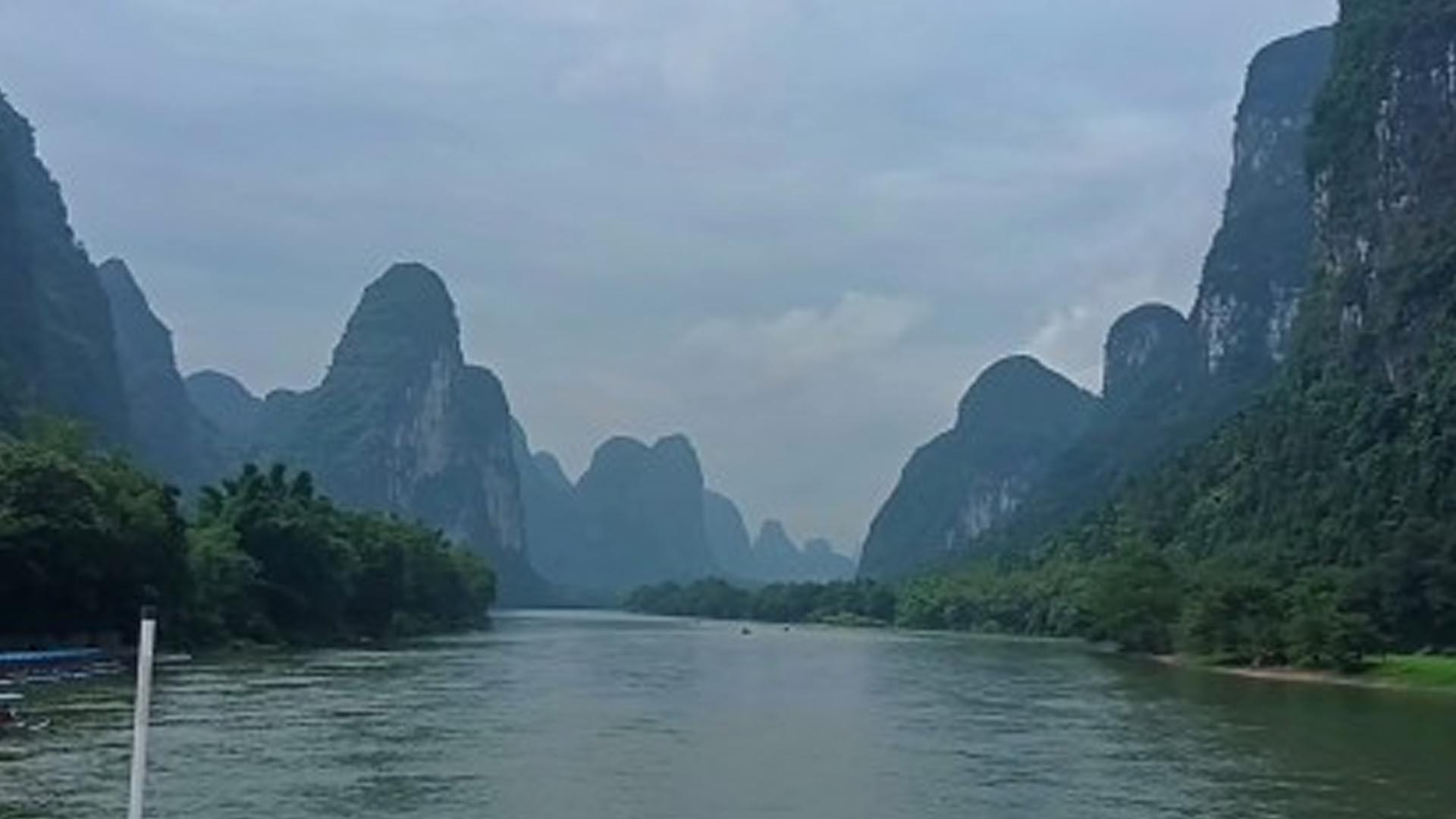There is an old Chinese saying that speaks about the “best scenery under heaven” that no other landscape on Earth could equal in beauty. And no, it’s not the Swiss Alps, the Grand Canyon, or the fjords of Norway. It is in China and it is not even the Great Wall.
The title belongs to the quaint southern Chinese city of Guilin, particularly its scenic Lijiang or Li River set against the backdrop of its expansive karst landscape. With two rivers and four lakes running across a bevy of these limestone hills, it is only natural for these geographic features to be deeply ingrained in the history, culture, psyche, and economy of this city of almost 5 million inhabitants.
For tourists, reaching the city in this northeastern part of the Guangxi Zhuang Autonomous Region is quite easy, taking only two hours by high-speed train (running at 250 kph at top speed) from the region’s capital of Nanning City. Going around the city, one can’t help but find similarities, both big and small, between Guilin and the Philippines, beginning with its famous limestone hills.
Perhaps the most prominent and obvious geographical feature of the city, Guilin’s gigantic and irregularly shaped limestone hills are literally everywhere, surrounding the city center from all corners and jutting out from afar, behind the cityscape. It seems as if the city itself was meticulously built around and among these karst hills, careful not to disturb these imposing rock formations. One condominium was built so close to one of the hills it almost seemed the man-made structure was kissing the rocks – a perfect metaphor to the coexistence between man and nature.
But still the best way to experience these towering mounds is to take a leisurely four-hour cruise by motorized boat or bamboo raft on the Li River, starting at the Guilin Pier less than 30 kilometers from the city center down to the terminal stop at the city’s Yangshuo County.
Though breath-taking all year round, the landscape is best enjoyed, ironically, when the skies are overcast and fog partially envelopes the hills, giving a mystical and otherworldly feel, or during sunset with the misty mountains’ silhouette against the golden sky and water. From a distance, some local fishermen still practice the ancient fishing technique using trained cormorant birds.
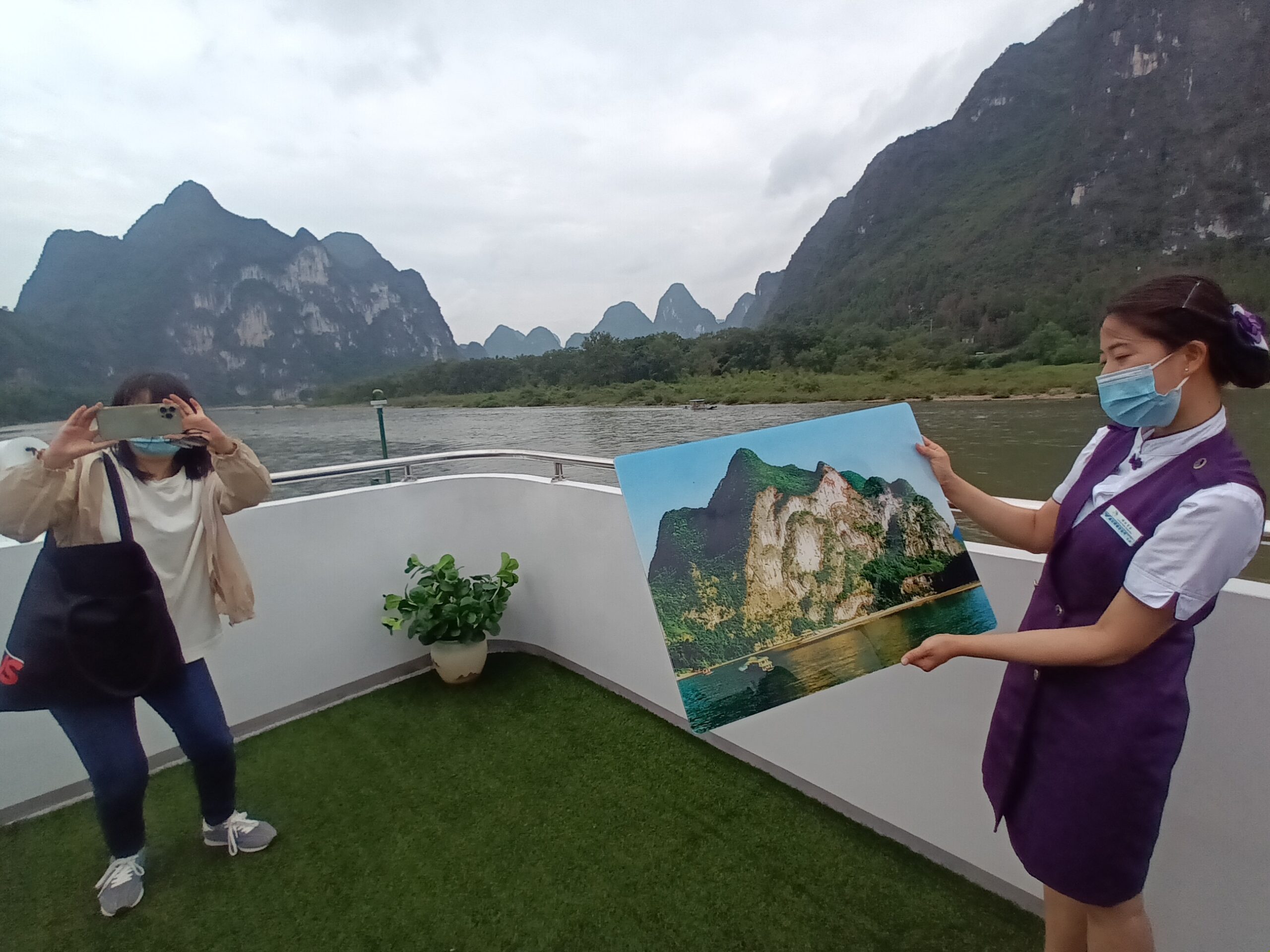
Every turn in the 80-kilometer section of the winding river opens up to another row of picturesque hills as far as the eye can see, seemingly transporting you to a fantasy film. The Guilin hills are so famous they are featured on the backside of the current ¥20 Chinese banknote.
Each rock formation has its own unique charm, with one of them – called the Nine Horses Fresco Hill – having a cliff side with a seeming image of nine horses in various poses formed by weathered rocks. The splattering of these hills across the city’s vast landscape easily brings to mind Bohol’s Chocolate Hills, which – you guessed it – are actually a karst rock formation.
After disembarking from the river cruise at the terminal station in Yangshuo County, you then proceed to the famous West Street, a 500-meter shopping street nestled among the karst hills and lined with boutiques, souvenir and specialty shops, inns, bars, restaurants, and cafés. If you are lucky enough, you get to pet one of the fluffy and shiny-eyed alpacas casually hanging out at some of the storefronts.

A right turn toward the far end section of the street leads you to a row of quaint food places in a style reminiscent of Swiss cottages and French shops. In fact, the entire area was said to have been fashioned after traditional European villages exactly to lure in Western tourists.
Just like the famed Spanish-era Calle Crisologo of Ilocos Sur province, the West Street also transports tourists back in time with its cobblestone (albeit marble) pavement and some Western-inspired architecture.
At 1,400 years old, the street is the oldest in the entire county and has been so popular among Westerners for its vibrant fusion of eastern and European culture that it has gained the moniker “Foreigners’ Street.”
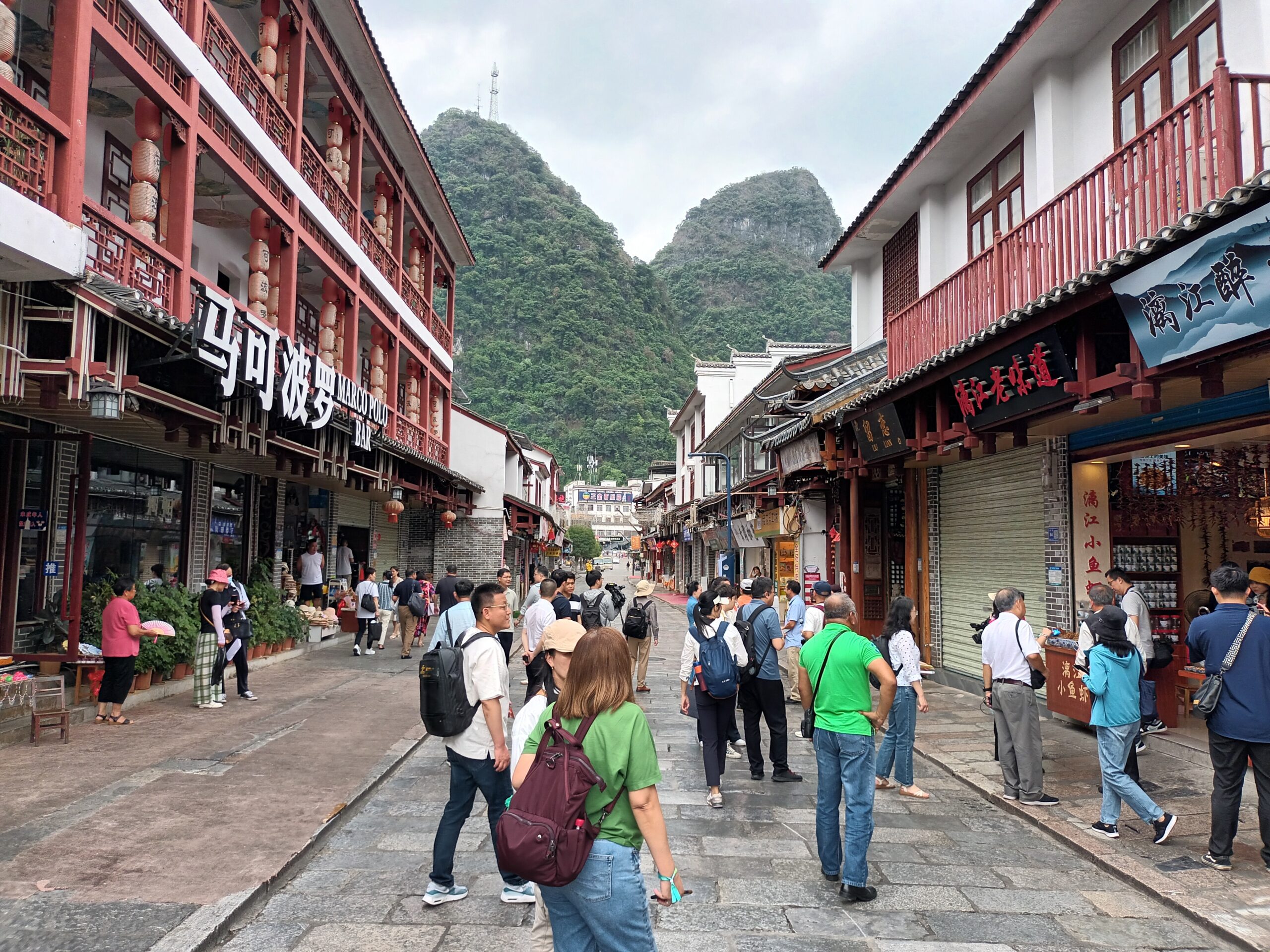
Even at night, the city still has its unique charm. If Loboc has its floating resaurants, Guilin also has its own tourist cruises that go down the city’s four lakes (which are tributaries of Guilin’s two main rivers).
Instead of a forest, the cruise boats sail along colorfully illuminated lakeside parks and establishments, and under a series of bridges, also passing by Guilin’s iconic Sun, Moon, and Mulong pagodas. A light show, a traditional dance number, and an exhibition of cormorant fishing complete the cruise.

And finally, a perfect – and healthy – way to cap off a trip in Guilin is to visit the Heiji Agri Farm, an organic farm that started marketing itself as an agri tourism destination in the city, offering agricultural workshops and a tour of its plantations, poultry farm, and processing facilities – pretty much in the same vein as famous Filipino farms in Laguna, Palawan, and nothern Luzon.
Upon entering the property, guests are greeted by several parked microvans teeming with produce like lettuce, string beans, tomatoes, pumpkins, and eggplants. These mobile stores sell agricultural products in the style of our own Kadiwa stores, but with membership discounts and freebies.
These mobile stores are part of the farm’s efforts to make sustainable living more accessible to the community, even as the farm looks after their own farm workers. In an effort to support farmers in the community, the farm has even tied up with the Guilin Bank to put a branch right inside the property, making banking more accessible to them, especially those needing loans or bank financing for their farm inputs or equipment.
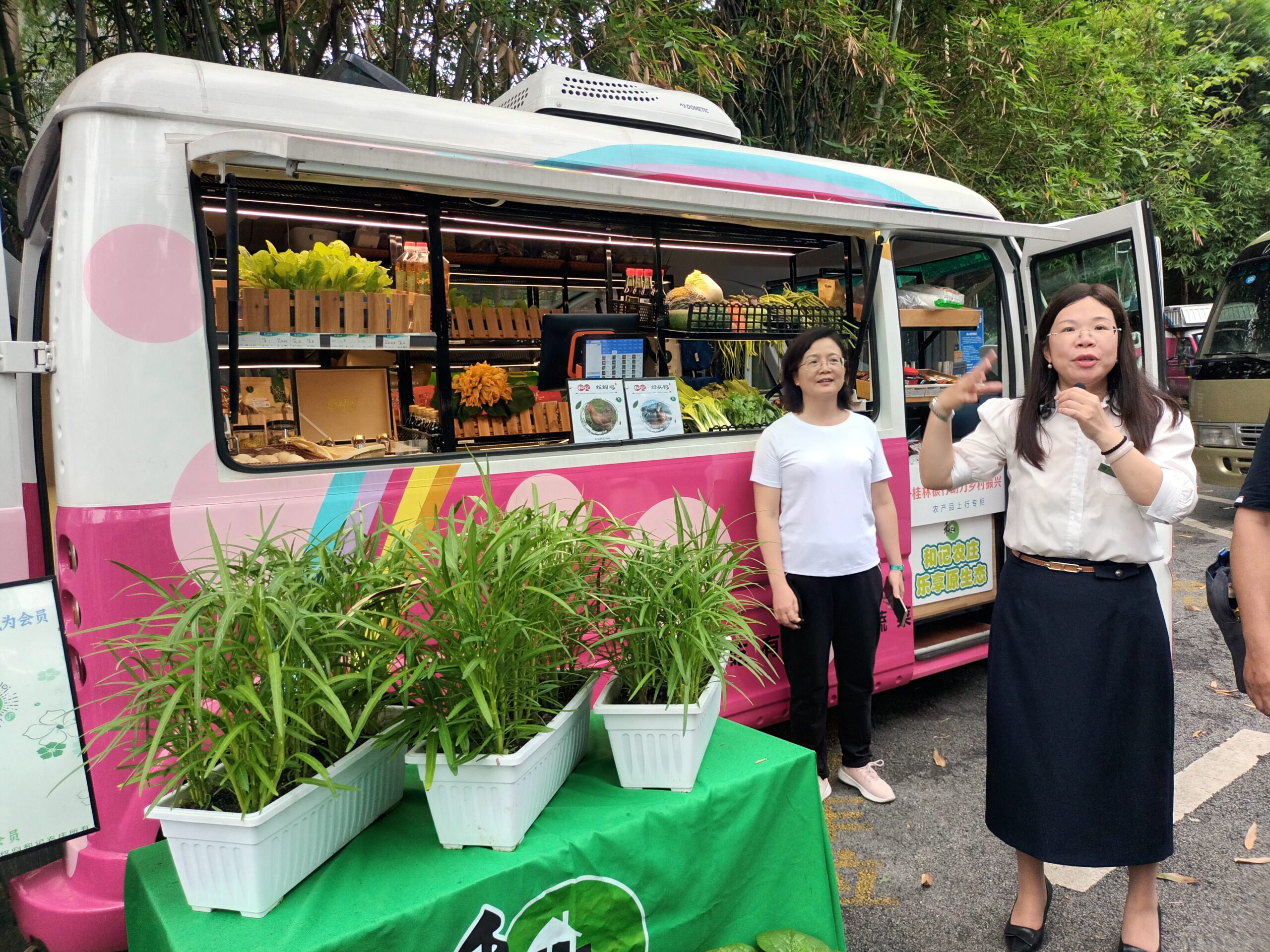
But among the main attractions in the property are its soybean and mung bean farms that allow it to produce products like soy sauce, tofu, beancurd sheets and sticks, and desserts like sweetened silken tofu called douhua (said to be where “taho”came from minus the sago pearls) and sweetened mung bean (like ginataang monggo minus the gata or coconut milk), as well as soy milk and “monggo” milk. Soy plays an important role in Guilin cuisine as pickled tofu is one of the city’s “three treasures” along with its chili sauce and rice wine.
The farm is also among the only few producing soy sauce the traditional way, by leaving soy beans to ferment inside rows of huge covered jars under the sun for around a year, producing 5 kilograms of sauce for every 15 kilos of beans.
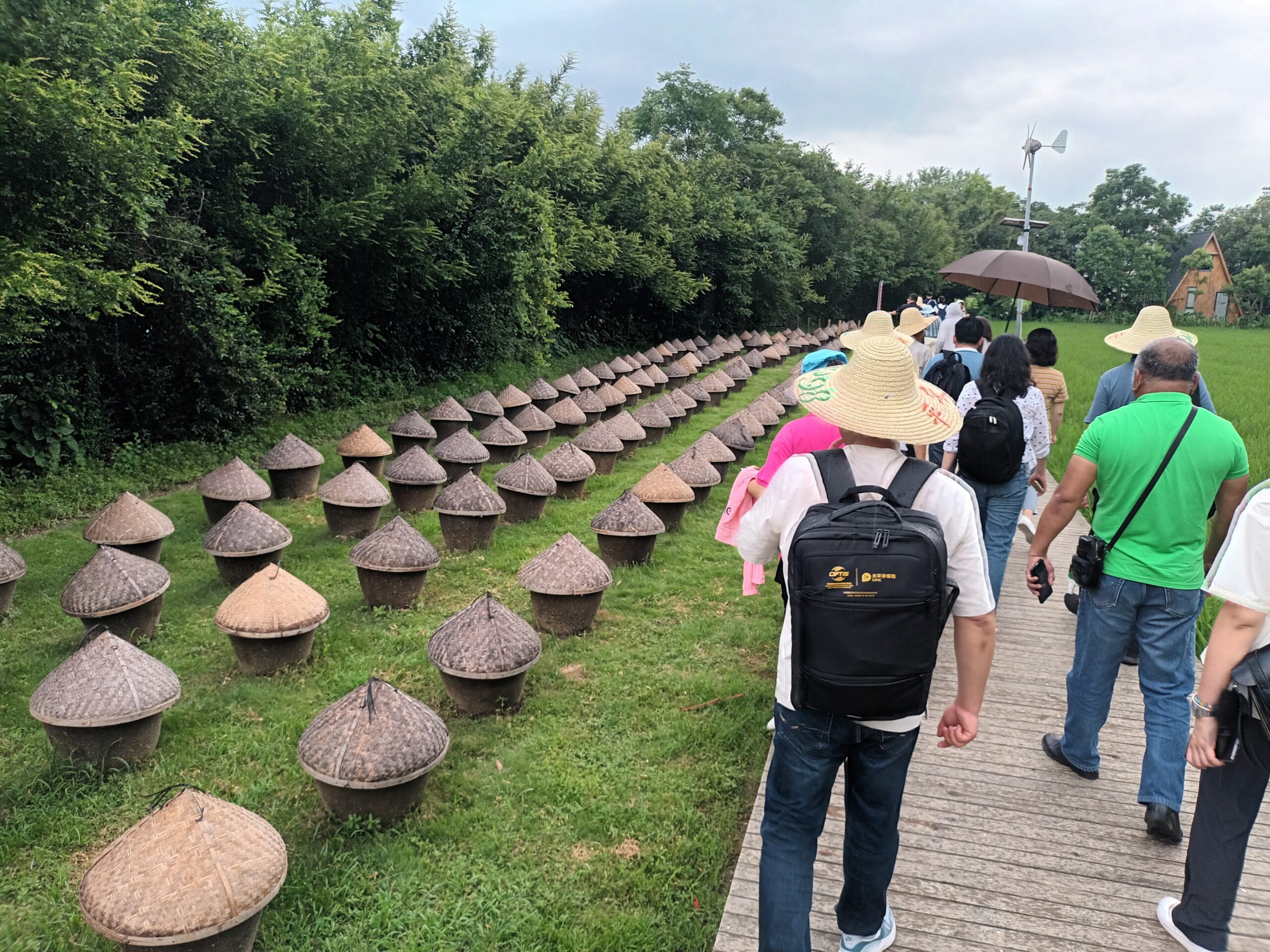
On a side note, tofu and monggo desserts are not the only food here that Filipinos might be familiar with as mangoes are also a big thing here, since the region – particularly its Tiandong County in Baise City – is a major producer of the well-loved fruit. Mangoes are literally everywhere, from candies and cookies to beverages and even dried mangoes.
Who knew this much surprise and wonder is hidden among Guilin’s limestone hills and its arteries of rivers and lakes? But calling the city one of China’s best-kept secrets would be inaccurate because as far as tourists go, the place is anything but secret. The city’s enchanting scenery, thrilling sounds, inviting flavors, and rich culture, all lend much credence to that other famous adage here, “By waters, by mountains, most lovely, Guilin.” (PNA)


